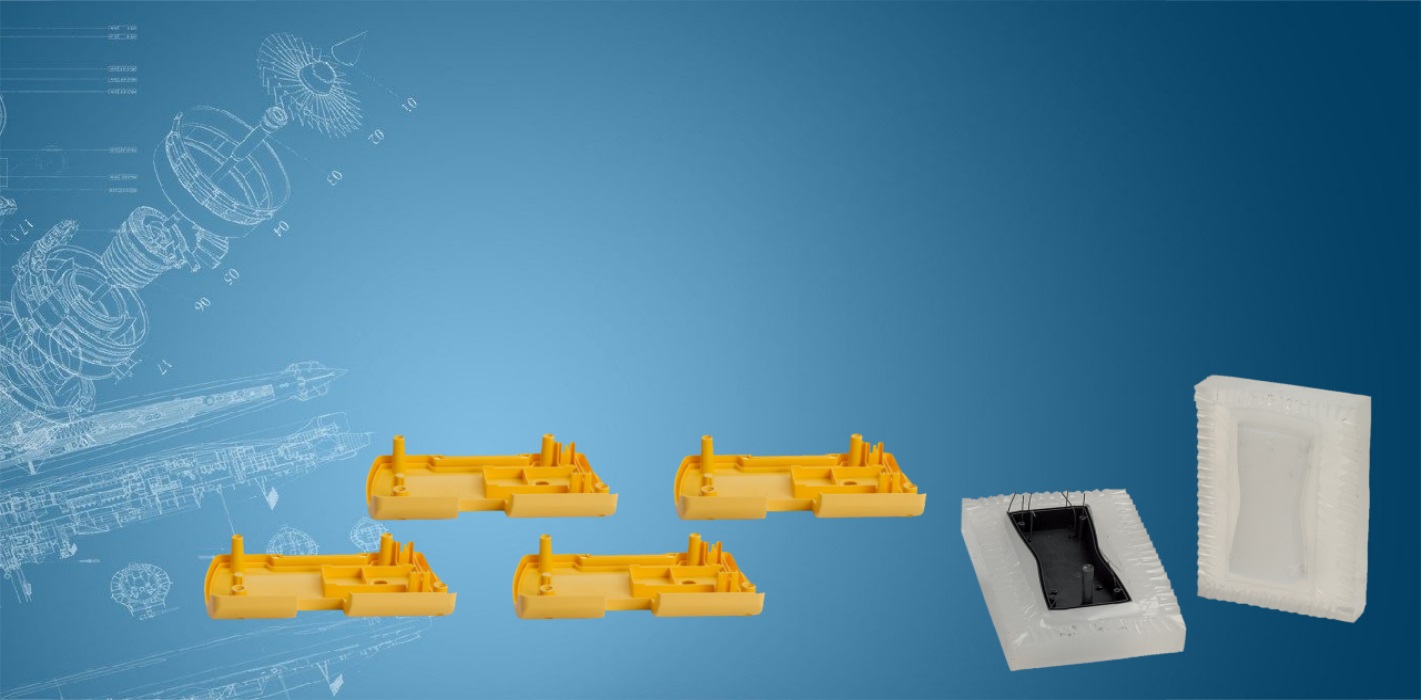
Vacuum Casting Services
Vacuum casting services allows the production of small batches of high quality moldings in a range of polyurethane resins that replicate the performance of engineering plastics without the high costs of hard tooling associated with injection molding.
The process starts with making a mold by encapsulating a master model in two-part liquid silicone rubber. A vacuum is then applied to remove any trapped air, then it is cured in an oven. Master models can come from a number of 3D printing technologies including stereolithography.
Once the silicone is cured, the mold is cut open to form a split line, the master model is removed which leaves a mold cavity perfectly replicating the master model.
To make a part, the mold segments are put back together, secured, pre‑heated and placed in the vacuum casting system chamber. Two or three part resin is weighed, pigment added if required and the resin parts are placed in the automatic mixer of the vacuum casting system.
At this point, the vacuum casting system takes over the process to mix the resin components and vacuum cast the model. Once this is complete the casting is cured at 70 °C. After curing, the mould segments can be separated and the part removed.
All that remains is for the part to be trimmed and finished as required.
Benefits of Vacuum Casting
- From master model to multiple components within 24 hours – reduces development time and saves cost.
- Vacuum casting services can be used for small batches of high quality prototypes or low volume end use parts.
- Wide range of resins available to suit your application – food grade, clear, flame retardant and coloured.
- Good mould life – moulds are capable of producing up to 50 parts before retooling is required, making vacuum casting the perfect choice for small batch production.
- Versatile – resin types can be changed very quickly reducing system downtime.
- Master models can come from a range of sources, the most common being stereolithography models, but increasingly the accessibility of 3D printers has become a useful source.
- Highly complex shapes can be accommodated through multisegment molds.
Typical applications of Vacuum Casting
- High quality prototypes for product design verification.
- Small batch production for bespoke products.
- Functional nylon components in a range of grades –particularly good for living hinges and high strength requirements.
- Automotive ‘hot test’ and specialist manufacture.
- High quality wax masters for investment casting.
- Flexible components using Vario Vac technology.
System Configuration
- Vacuum casting module – for plastic prototypes and low volume production in vacuum casting polyurethane resins.
- Nylon casting module – for prototypes and production parts in nylon and filled nylon.
- Heated cup for wax masters – to create wax master models for investment casting and low melting point alloys for carbon fibre lay-up.
- Vario Vac – for prototypes in silicone rubber and highly filled viscous materials.
Vacuum Casting Ancillaries
- Nylon module – enables you to create functional components in PA6 nylon.
- Curing ovens – a range of curing ovens for materials and moulds – analogue or digital control.
- Extension chamber – for projects that fall outside the capacity of a standard system, available for the 5/04 vacuum casting system.
- Twin robot – enables increased casting capacity, available for the 5/04 vacuum casting system.
- Fume and dust benches – enable you to maintain a clean and safe atmosphere for the system operator and help to maintain part quality.
- Training programmes – tailored to suit your requirements.
